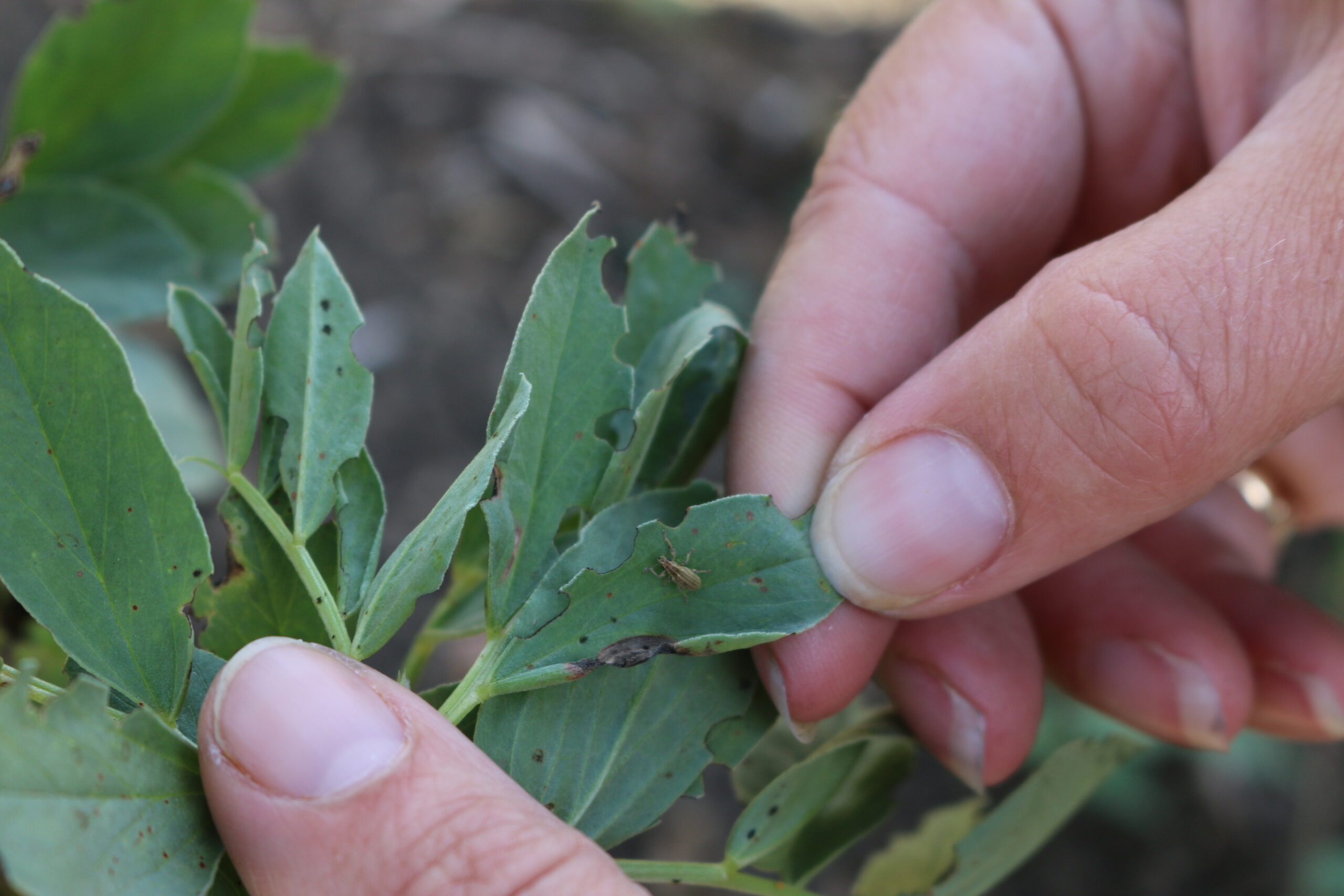The pea leaf weevil—once the bane of the Canadian pulse grower—is now the focus of research aimed at its destruction using promising new tactics that pit bug against bug.
The project, which was led by Dr. Meghan Vankosky of Agriculture and Agri-Food Canada (AAFC) in Saskatoon, investigated the use of natural predators and other methods as a way to control pea leaf weevil (PLW) in field pea and faba bean.
At least, that is the end goal. For now, PLW is still a very real problem, especially for field pea and faba bean growers in the prairies—and the research, while promising, is still in the exploratory phase.
This is not to say it has not yielded results farmers can apply to their crops right away, says Dr. Vankosky.
PLWs can be serious pests, especially when they invade a crop in high numbers. Larvae feeding within the root nodules can do enormous damage, reducing the plant’s capacity for nitrogen fixation and leading to poor growth, reduced seed yield, and higher susceptibility to disease and infection. Adult weevils consume the leaves in spring and before they overwinter.
Reducing PLW populations effectively has stumped researchers in Europe, the United States, and other regions for some time, according to Dr. Vankosky.
“Insecticides applied to the leaf are not that effective, while systemic insecticides, which are absorbed into the plant itself, are more effective but costly.”
Dr. Vankosky’s project, Integrated pest management of pea leaf weevil using biological control and low insecticide-input alternatives, began in 2016 when she and a colleague observed a pea leaf weevil infestation on volunteer peas along the edge of a harvested pea crop. “That led me to ask if pea or bean seedlings could be used as trap crops to attract adult weevils.”
Trap crops are often used to lure agricultural pests from main crops growing in neighbouring rows.
Dr. Vankosky’s field research, which took place in Lacombe, Alta., demonstrated that field pea and faba bean are, indeed, effective traps for the PLW, drawing the pests to rows where they can be destroyed via the focused application of insecticides. Future studies will explore the effectiveness of this approach and various insecticides as weevil-destroying agents.
Another aim of the project was to look for natural enemies of the PLW to reduce or eliminate the need for insecticides. Enter Pterosticus melanarius, aka the Rain-Beetle. A common ground beetle, P. melanarius is highly active in field pea and faba bean crops, according to study. And it is hungry for pea leaf weevil.
“Best of all, this species is a generalist predator, so it could contribute to the suppression of other pest populations,” says Dr. Vankosky.
Growers take note—practicing reduced tillage and avoiding broad-spectrum insecticide applications protects these beetles and improves your chances of managing PLWs and other pests.
Dr. Vankosky says additional research will assess P. melanarius’s efficacy as part of an integrated pest management program, especially when combined with trap crops.
For more information about ground beetles and other natural enemies of pulse pests, visit prairiepest.ca and fieldheroes.ca. You can also contact Dr. Vankosky directly at mmeghan.vankosky@agr.gc.ca.

Project: Integrated pest management of pea leaf weevil using biological control and low insecticide-input alternatives
Industry Funder: Alberta Pulse Growers
Project Cost: $351,835
Project Completion Date: March 31, 2023



